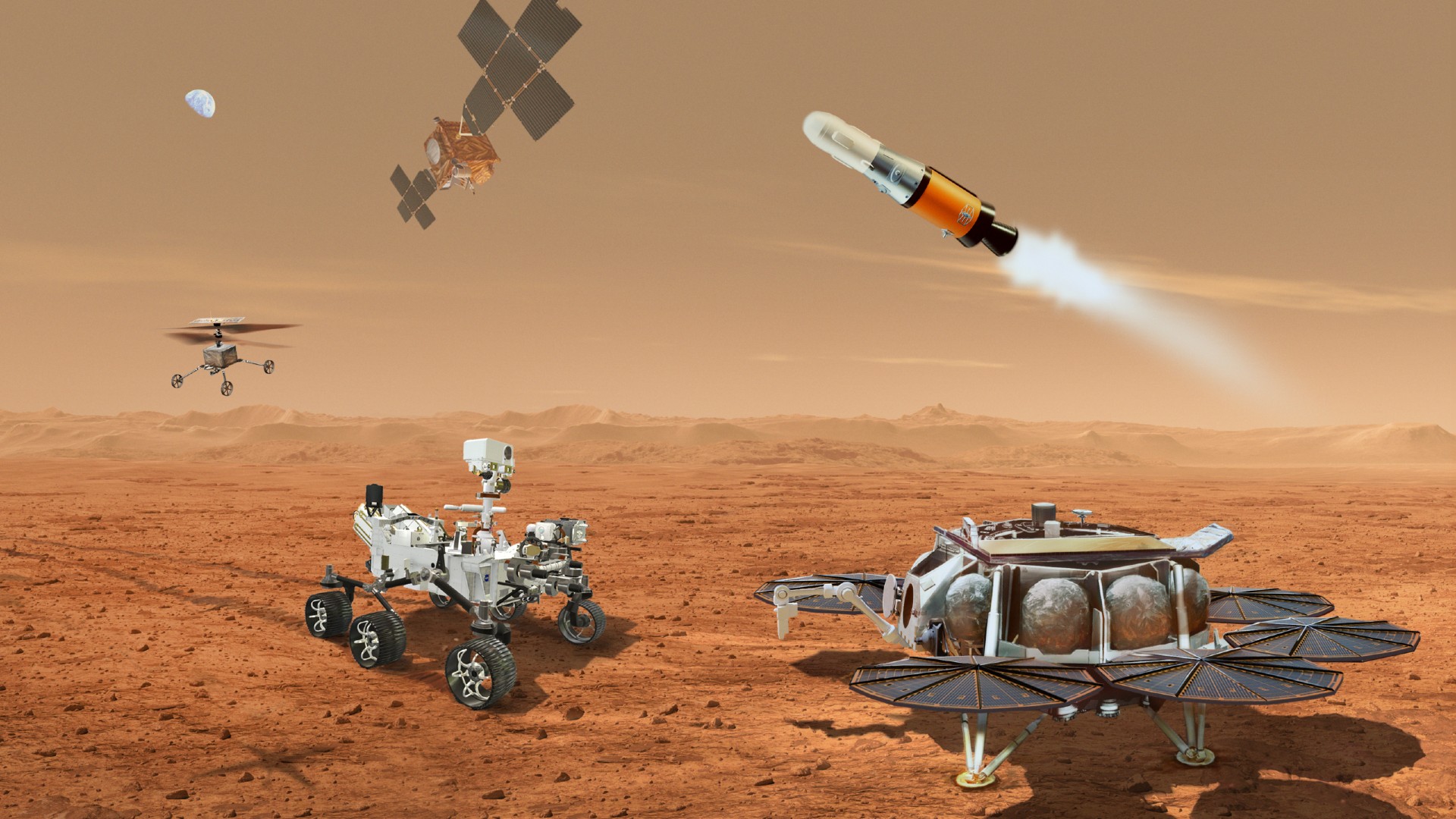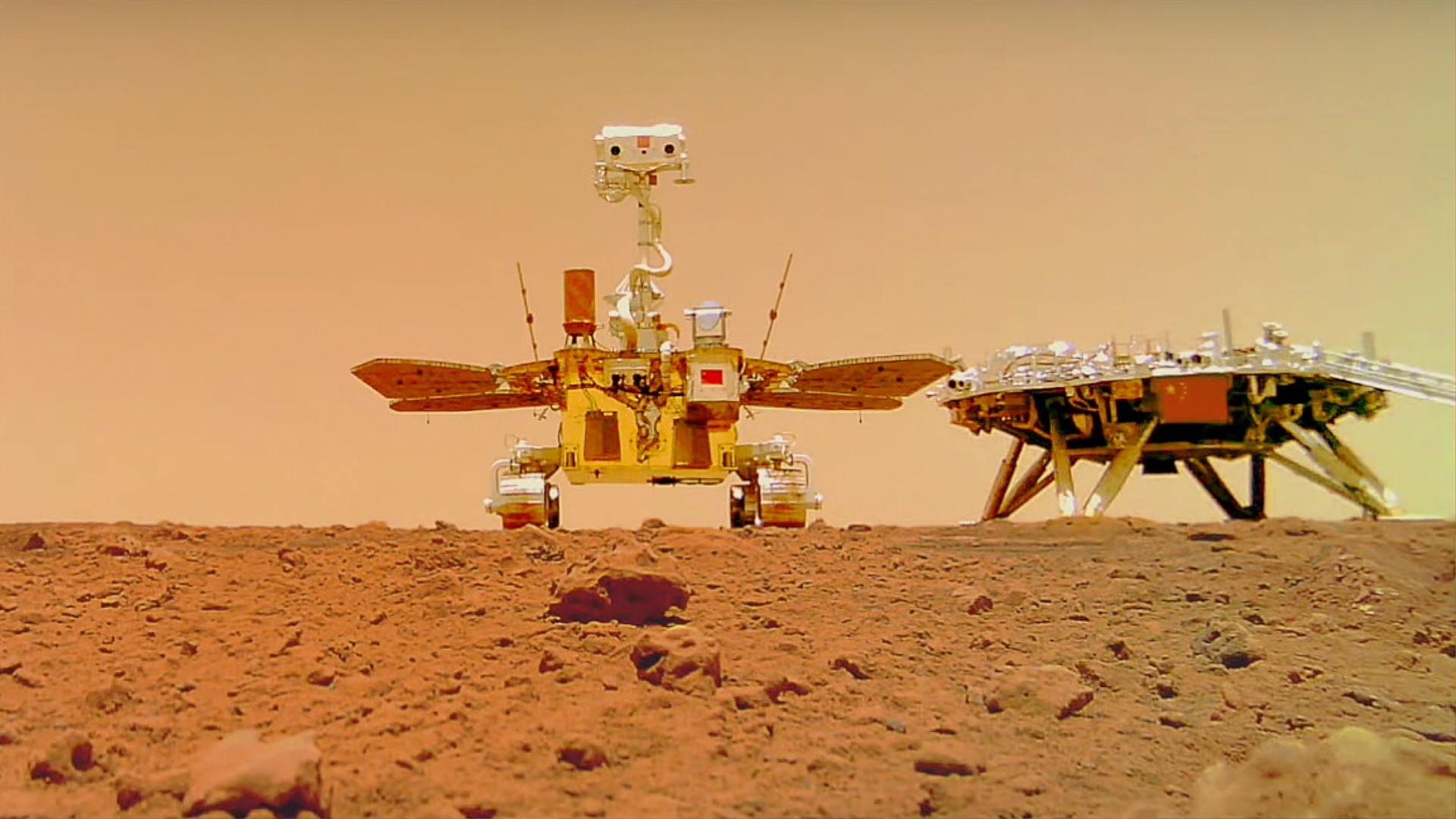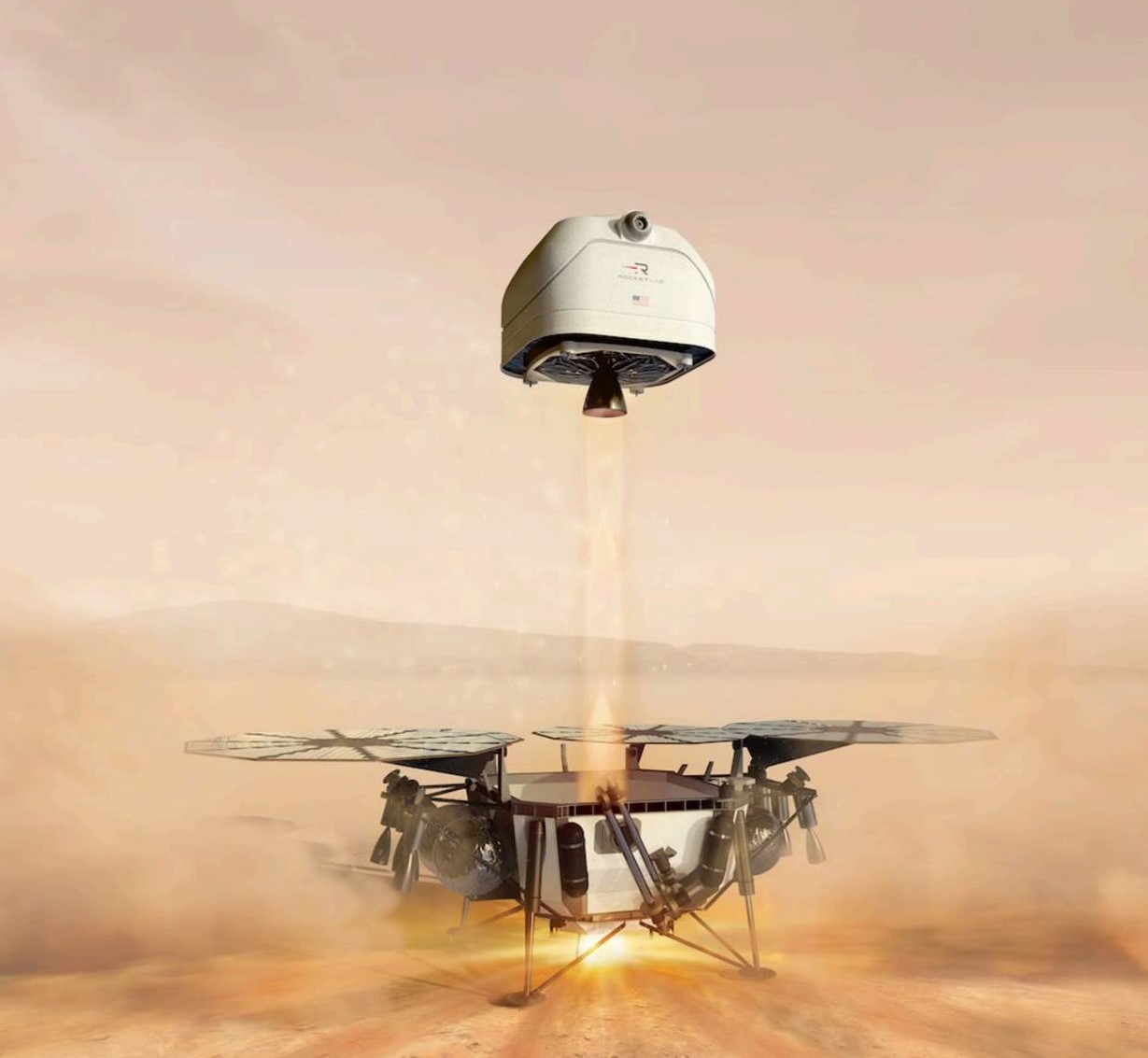
Can NASA's troubled Mars Sample Return mission be saved?
NASA wants to return Mars samples to Earth, but budget problems and technical woes have the mission caught between a rock and the Red Planet.

There appears to be an unofficial robotic space race underway involving the Red Planet. Both the U.S. and China are scripting strategies for bringing goodies back to Earth from Mars via their respective Mars Sample Return (MSR) endeavors.
For America, things are currently happening in real-time on Mars. NASA's Perseverance rover is busily wheeling about within the ins and outs of Jezero Crater, biting into and snatching primo chunks of Mars for eventual pick-up by a future MSR mission. But early on, for NASA, the space agency found itself caught between a Mars rock and a budgetary and timing hard place. The space agency's plans for MSR eventually rang a price tag upwards of $11 billion. Additionally, NASA estimated that samples of Mars dirt, rock, and atmosphere wouldn't be returned to Earth until 2040.
That plan, as blueprinted by NASA and its cooperative MSR partner, the European Space Agency (ESA), was unacceptable and declared so by NASA leadership. What followed were a set of studies for NASA, from within and outside the agency, to help pinpoint avenues to cut MSR costs and shorten the calendar time for return to Earth of prime-time Mars collectibles. Now, yet another shoe is set to drop thanks to an additional review by an independent committee looking into the MSR program.
MSR Review team
The new review is being conducted by the MSR Strategy Review Team chaired by Maria Zuber, an MIT planetary scientist. The team is assessing the studies conducted by industry, a team across NASA centers, the agency's Jet Propulsion Laboratory, and the Johns Hopkins Applied Physics Laboratory.
That team will recommend to NASA a primary architecture for the campaign, including associated cost and schedule estimates.
What they have found will be reported by NASA soon.
"Our current status is that the Mars Sample Return Strategy Review team is delivering a final report to NASA's associate administrator for the Science Mission Directorate before the end of [2024]. NASA anticipates additional Mars Sample Return updates in the first quarter of 2025," said Karen Fox, a NASA spokesperson, responding to a Space.com inquiry.
Breaking space news, the latest updates on rocket launches, skywatching events and more!
Zuber and colleagues are to assess all the study outputs, eyeing a central question: Is America's Mars Sample Return endeavor salvageable?
Red planet probing
Looming large in space and time for sampling of Mars is China's Tianwen-3 mission that could retrieve specimens for lab looks here on Earth around 2031.
According to a newly published research paper, the Tianwen-3 spacecraft involves two launches around 2028 headed for distant Mars.
According to the study, which appeared in the National Science Review journal, mission planners are currently analyzing where on Mars to sample, what to choose, how to sample and how to utilize the collected materials.
At China's Deep Space Exploration Laboratory, the mission's chief scientist Hou Zengqian and its chief designer Liu Jizhong, with colleagues, are blueprinting their exploration strategy. "The primary scientific goal of which is to search for signatures of life on Mars," they explain.
But will China's Mars mission constitute a "grab bag," one-stop shopping approach or host other type of sample-gathering gear once on the Red Planet. So far, details are skimpy.

High priority questions
Meanwhile, the MSR dilemma in the United States is under intense discussion at gatherings of the Mars Exploration Program Analysis Group (MEPAG). It serves as a community-based, interdisciplinary forum for inquiry and analysis to support NASA Mars exploration objectives.
"The NASA/ESA approach to MSR seeks to address as many different high-priority science questions about Mars as we can from one location - Jezero Crater," said MEPAG chair, Victoria Hamilton, also a leading planetary scientist at Southwest Research Institute in Boulder, Colorado.
"Although looking for signs of ancient biosignatures addresses one of those questions, it is only one of the many scientific questions that can be addressed by returning samples from Mars, and the choice to collect samples from in and around Jezero Crater reflects this thinking," said Hamilton. "MEPAG has not put forward a position on China's plans for MSR."

Scientifically selected samples
That said, MEPAG has always advocated strongly for the return of a scientifically-selected suite of samples, Hamilton told Space.com, "so that we can best address as many high-priority science questions as possible.
Hamilton said that "scientifically-selected" includes things like obtaining samples representing a diversity of geologic environments/processes, the availability of bedrock or other in-place materials to sample and obtain appropriate context information, "and specifically targeting locations where there is a likelihood of ancient bio-signature preservation."
Abandoned idea
Although the return of any samples from Mars, Hamilton added, will certainly provide new insights, "not all destinations provide samples of equivalent value."
The science community largely abandoned the idea of a "grab bag" site partly because the Mars Pathfinder mission of 1997 landed in a region with no intact bedrock, "and the results obtained from measurements of the nearby loose rocks were difficult to understand absent their original context," said Hamilton.
In short, the approach taken jointly by NASA and ESA with MSR has been focused on returning the best possible samples, Hamilton said, "and that could end up meaning that MSR is not the first Mars sample return mission."
China scoops
Bruce Jakosky is a long-time Mars investigator and is a senior research scientist at the University of Colorado's Laboratory for Atmospheric and Space Physics in Boulder.
"Any sample is better than no sample," Jakosky told Space.com, "but the suite of samples that has been collected by Perseverance is way, way better than any grab sample or short traverse rover you could do."
Carefully selected samples of different type of materials are far better than one piece of a rock or one soil sample, said Jakosky. "In that sense, scientifically, I don't worry about whether the Chinese will scoop us. I think that all science is good science. It becomes a political question of whether we want to let the Chinese scoop us," he said.

Leonard David is an award-winning space journalist who has been reporting on space activities for more than 50 years. Currently writing as Space.com's Space Insider Columnist among his other projects, Leonard has authored numerous books on space exploration, Mars missions and more, with his latest being "Moon Rush: The New Space Race" published in 2019 by National Geographic. He also wrote "Mars: Our Future on the Red Planet" released in 2016 by National Geographic. Leonard has served as a correspondent for SpaceNews, Scientific American and Aerospace America for the AIAA. He has received many awards, including the first Ordway Award for Sustained Excellence in Spaceflight History in 2015 at the AAS Wernher von Braun Memorial Symposium. You can find out Leonard's latest project at his website and on Twitter.
